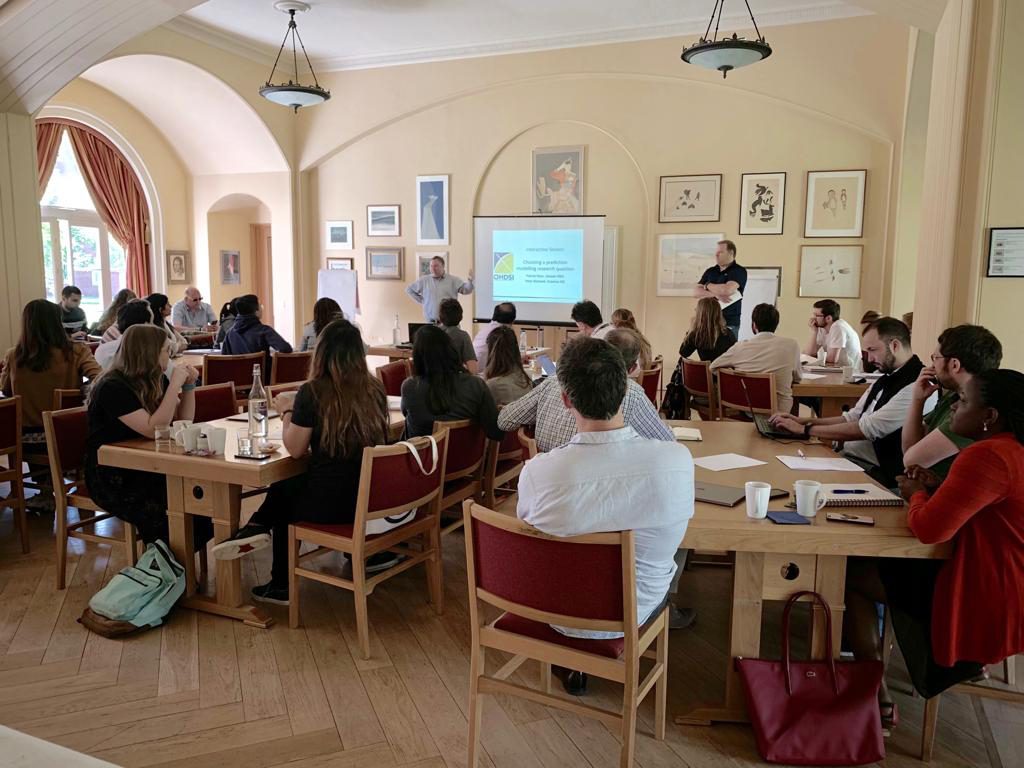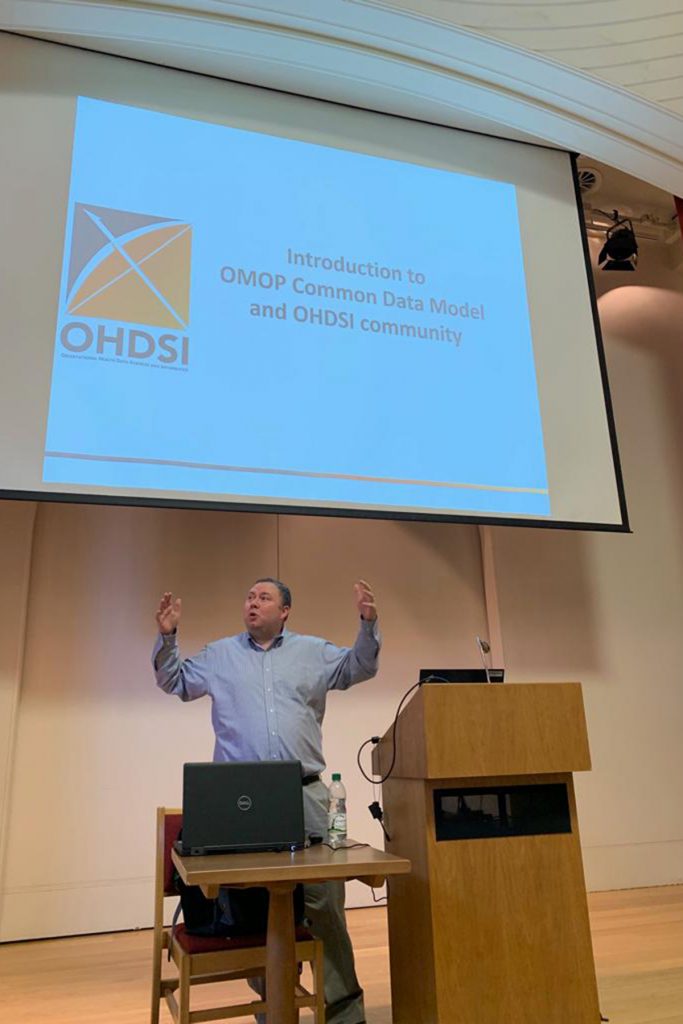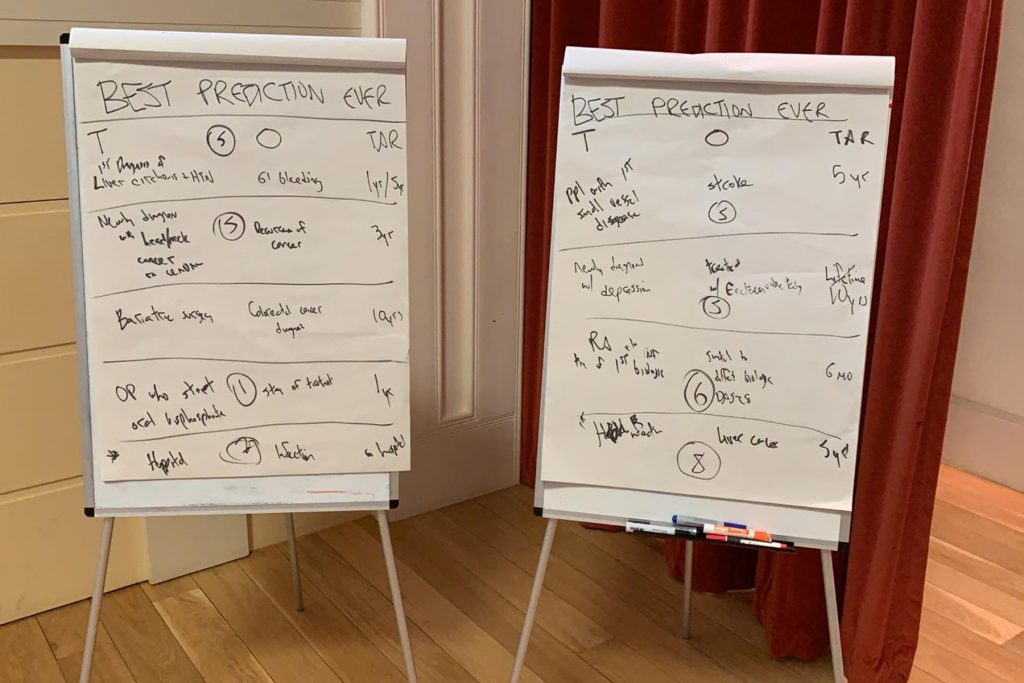
OHDSI collaborated with the Oxford Summer School session for a tutorial on tools and a one-day study.
The boundless potential to create real-world evidence through OHDSI was demonstrated for a second time in as many weeks, as collaborators from both sides of the Atlantic met in England during the Real World Epidemiology: Oxford Summer School session.
Peter Rijnbeek and Patrick Ryan led the June 27 session on the OMOP common data model, OHDSI, and the analytical use case of patient-level prediction.
Rijnbeek and Ryan supported the mission of OHDSI collaborator and Oxford professor Dani Prieto-Alhambra. The previous week, Rijnbeek and Ryan supported OHDSI collaborators Iannis Drakos and Ismail Gögenur during a three-day seminar for the Denmark Center for Surgical Sciences (CSS).
“It was great to have OHDSI join our summer school,” Prieto-Alhambra said. “Forty people’s jaws dropped whilst learning what can be achieved through open science, community and a common data model!”

Patrick Ryan (above) and Peter Rijnbeek led the OHDSI tutorial to 50 collaborators from varied backgrounds, ranging from academia, industry, clinical practice, and government across Europe.
The Oxford Summer School session brought together 50 collaborators from varied backgrounds, ranging from academia, industry, clinical practice, and government across Europe. The OHDSI-led session opened with an interactive exercise focusing on how to define a quality patient-level prediction problem.
Students were tasked with determining an important issue for patients, and then they voted on the highest-impact nomination — ‘Amongst patients newly diagnosed with chronic hepatitis B, which patients will go on to develop hepatocellular carcinoma in the next 5 years?’ — to become the focus for the remainder of the session.
“It is great to see Real World Evidence course organizers realize the importance of the OMOP common data model and OHDSI for creating reliable evidence,” Rijnbeek said. “We had a fantastic response from the participants when they saw the power of OHDSI in action to design and execute patient-level prediction studies.”
Rijnbeek and Ryan instructed the students about how to design a patient-level prediction study, as well as how to execute analysis and then interpret the results. Using the OHDSI open source, ATLAS and PatientLevelPrediction tools, the group witnessed a live demonstration before training a model around the chosen question and collaborating on a drafted paper that presented the results.
The preliminary results were quite encouraging, with initial performance of auc=0.84. The study has now been opened for OHDSI community participation.
Similar to the afore-mentioned work with CSS, the session demonstrated how OHDSI, through its community approach to collaborative research, turns ‘proposed idea’ into ‘generated evidence’ within hours.
“I was honored to represent the OHDSI community and share our community’s research and development at Oxford,” Ryan said. “It is great to see such a diverse mix of participants come together to learn, and it was fun to provide them the opportunity to experience open science collaborative research.”
“By working together as a community, we showed it is possible to go from brainstorming an idea to generating evidence in just one day,” Ryan added. “I hope that is a lesson the students take with them as they join the journey toward real world evidence.”
The Oxford Summer School session concluded Friday, when Nigel Hughes (Scientific Director, Janssen Clinical Innovation – Patient Data for Research) presented on the European Health Data & Evidence Network (EHDEN), a close collaborator with OHDSI.

